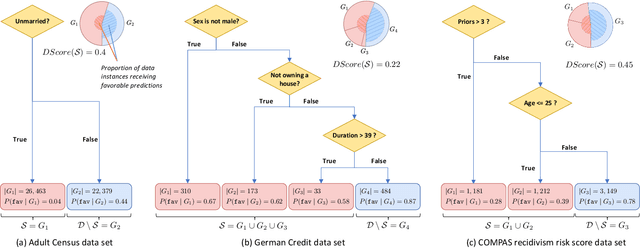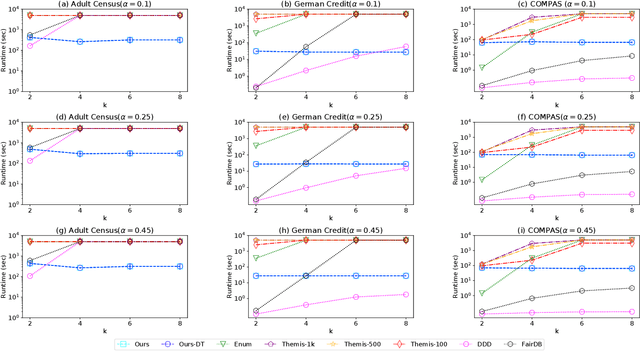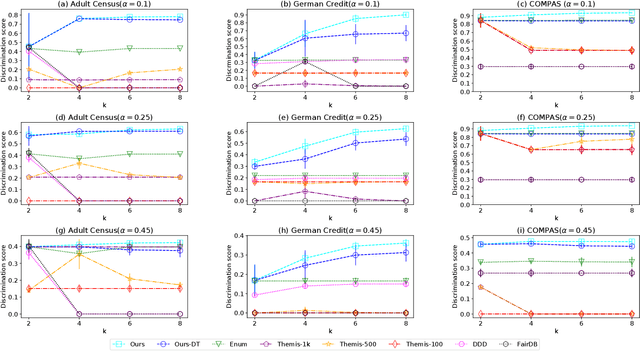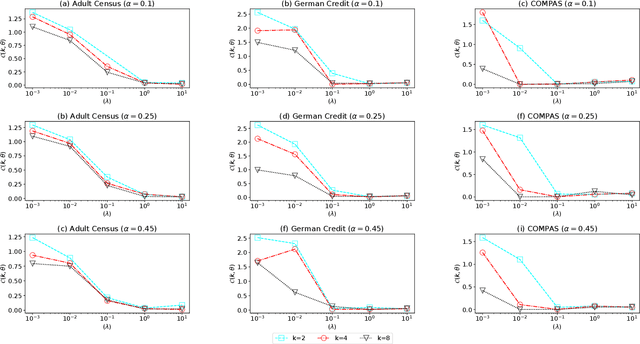Mohit Bajaj
Revealing Unfair Models by Mining Interpretable Evidence
Jul 12, 2022



Abstract:The popularity of machine learning has increased the risk of unfair models getting deployed in high-stake applications, such as justice system, drug/vaccination design, and medical diagnosis. Although there are effective methods to train fair models from scratch, how to automatically reveal and explain the unfairness of a trained model remains a challenging task. Revealing unfairness of machine learning models in interpretable fashion is a critical step towards fair and trustworthy AI. In this paper, we systematically tackle the novel task of revealing unfair models by mining interpretable evidence (RUMIE). The key idea is to find solid evidence in the form of a group of data instances discriminated most by the model. To make the evidence interpretable, we also find a set of human-understandable key attributes and decision rules that characterize the discriminated data instances and distinguish them from the other non-discriminated data. As demonstrated by extensive experiments on many real-world data sets, our method finds highly interpretable and solid evidence to effectively reveal the unfairness of trained models. Moreover, it is much more scalable than all of the baseline methods.
Robust Counterfactual Explanations on Graph Neural Networks
Jul 16, 2021



Abstract:Massive deployment of Graph Neural Networks (GNNs) in high-stake applications generates a strong demand for explanations that are robust to noise and align well with human intuition. Most existing methods generate explanations by identifying a subgraph of an input graph that has a strong correlation with the prediction. These explanations are not robust to noise because independently optimizing the correlation for a single input can easily overfit noise. Moreover, they do not align well with human intuition because removing an identified subgraph from an input graph does not necessarily change the prediction result. In this paper, we propose a novel method to generate robust counterfactual explanations on GNNs by explicitly modelling the common decision logic of GNNs on similar input graphs. Our explanations are naturally robust to noise because they are produced from the common decision boundaries of a GNN that govern the predictions of many similar input graphs. The explanations also align well with human intuition because removing the set of edges identified by an explanation from the input graph changes the prediction significantly. Exhaustive experiments on many public datasets demonstrate the superior performance of our method.
 Add to Chrome
Add to Chrome Add to Firefox
Add to Firefox Add to Edge
Add to Edge